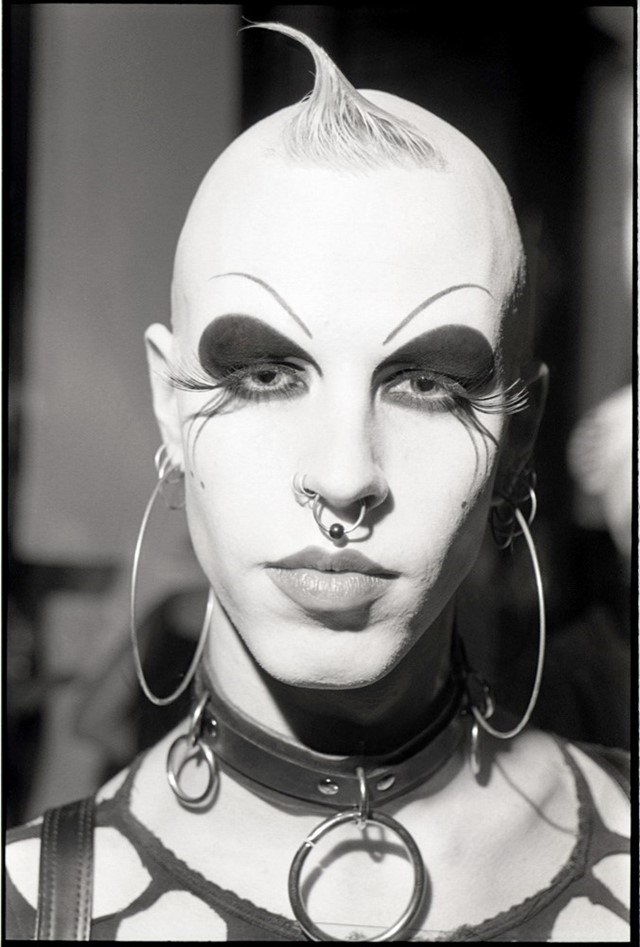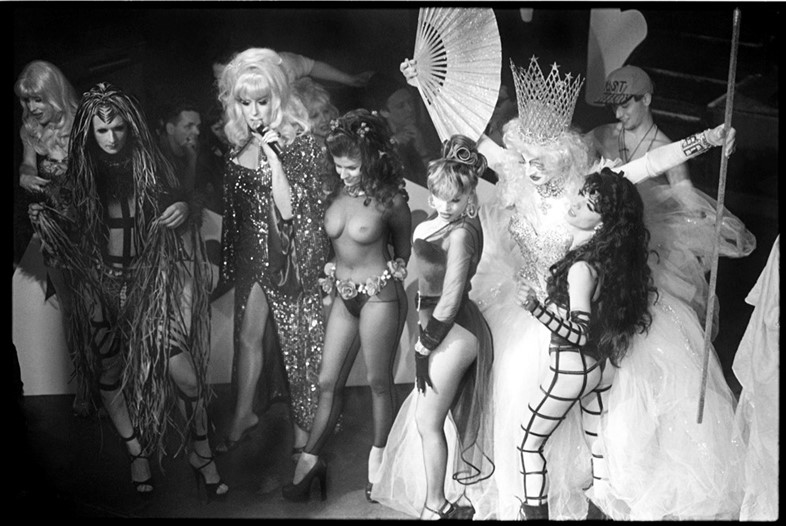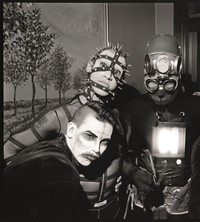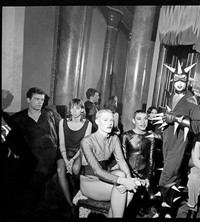A new book, Waltpaper’s New York: Club Kids, charts the history of the underground subculture – here, Cassidy shares his memories of the radical scene
- TextMiss Rosen
“When the Club Kids came along, we brought this idea that our identity was enough; we didn’t have to do anything else,” Walt Cassidy tells Another Man. “It’s very much ahead of the time. We were criticised at the same time the way people criticise the Kardashians: ‘You’re interesting looking but what do you do?’”
Cassidy puts that question firmly to rest in his magnificent new book, New York: Club Kids (Damiani), which charts the history of the last underground subculture of the analogue age. Cassidy, also known as Waltpaper, was an integral figure in the groundbreaking New York nightlife scene of the 1990s, when a new group of upstarts transgressed boundaries with singular aplomb, deconstructing the realms of fashion, music, drugs, gender, pop culture, and media to recreate themselves anew every week.
Although New York Magazine first coined the term ‘Club Kids’ in 1988, the scene gelled when the people behind The World nightclub set up shop at Peter Gatien’s Limelight in 1990. Their vision of the mega-club transformed a former church on the corner of Sixth Avenue and 20th Street into a brave new world.
“The 80s was quite a brutal decade,” Cassidy says. “There were the conservative politics in the US and UK, and the Aids crisis. By the time we get to the 90s, there was a need for relief.”
Cassidy first arrived in New York in 1991 at the age of 19. “It felt like walking through the gates of heaven,” he says. “My mother and aunt were bartenders at gay bars. We had drag queens cooking Christmas dinner so this wasn’t anything new. But when you get to New York, the standards were so high. The doors opened and every possibility was open to me.”
He quickly connected with the bubbling Club Kid scene, noting that, “As an identity format, it was very accessible. It didn’t require a huge commitment to participate. There was definitely an elite inner circle, and there were people who were setting the standards but anyone could put together a look and show up and participate; we were an open group.”

Cassidy deftly details the development and evolution of the Club Kid scene throughout its ten-year reign, taking exquisite care to spotlight the 98 per cent of the story that was overlooked by the media focus on Michael Alig. The book beautifully details the multi-faceted culture, its curious contradictions, and remarkably prescient sense of self.
Though it had strong DIY elements, the Club Kid scene benefited from the nightlife machine at Limelight. “I had come out of the punk scene, which was active on the street level and when I arrived into the Club Kids, we had our own publication [Project X magazine] and offices. There were PR people, an art crew, lighting people – there was so much professionalism around hanging out and I found that really engaging,” Cassidy says.
Extremely media savvy, the Club Kids understood the power of the press to catapult their radical vision into mainstream culture. “We were using daytime talk shows the way people are using Instagram now,” Cassidy says. “We were pushing ourselves as identities. We had this understanding that our identities were a brand and that was a new idea.”
The Club Kids embodied the ethos of the 90s, embracing the spirit of deconstruction in their creative process. “It was about ripping things apart and putting them back together, and letting all the scars show – that was a metaphor for the 90s: the fashion, the music, the style, even the drug use,” Cassidy says.

“The drugs that people were taking were about pursuing truth, opening up and going to the furthest point inside. The 80s, it was cocaine, which is a superficial social drug. With other drugs [like ketamine] you are exploring your mind and looking for an inner truth.”
Heroin eventually became the death-knell of the scene. “We knew it was dangerous but we were so adventurous that we were like, ‘Let’s be junkies now.’ We took it on as a style, like anything else we used to build our identities,” Cassidy reveals.
Yet for all of the horror that drug caused, Cassidy maintains a balanced perspective, avoiding the reductive sensationalism with which the scene has been portrayed. Both a deeply personal account and a well-researched cultural history, Walt Cassidy’s New York: Club Kids is a book whose time has come — the story that could only be told by an insider.
“I was aware I was in the middle of a historic moment and we were playing out all these archetypes, like ‘Wow, we are at the core of the universe’,” Cassidy says. “It felt like Babylon.”
New York: Club Kids by Waltpaper is published in October by Damiani, pre-order the book here.















